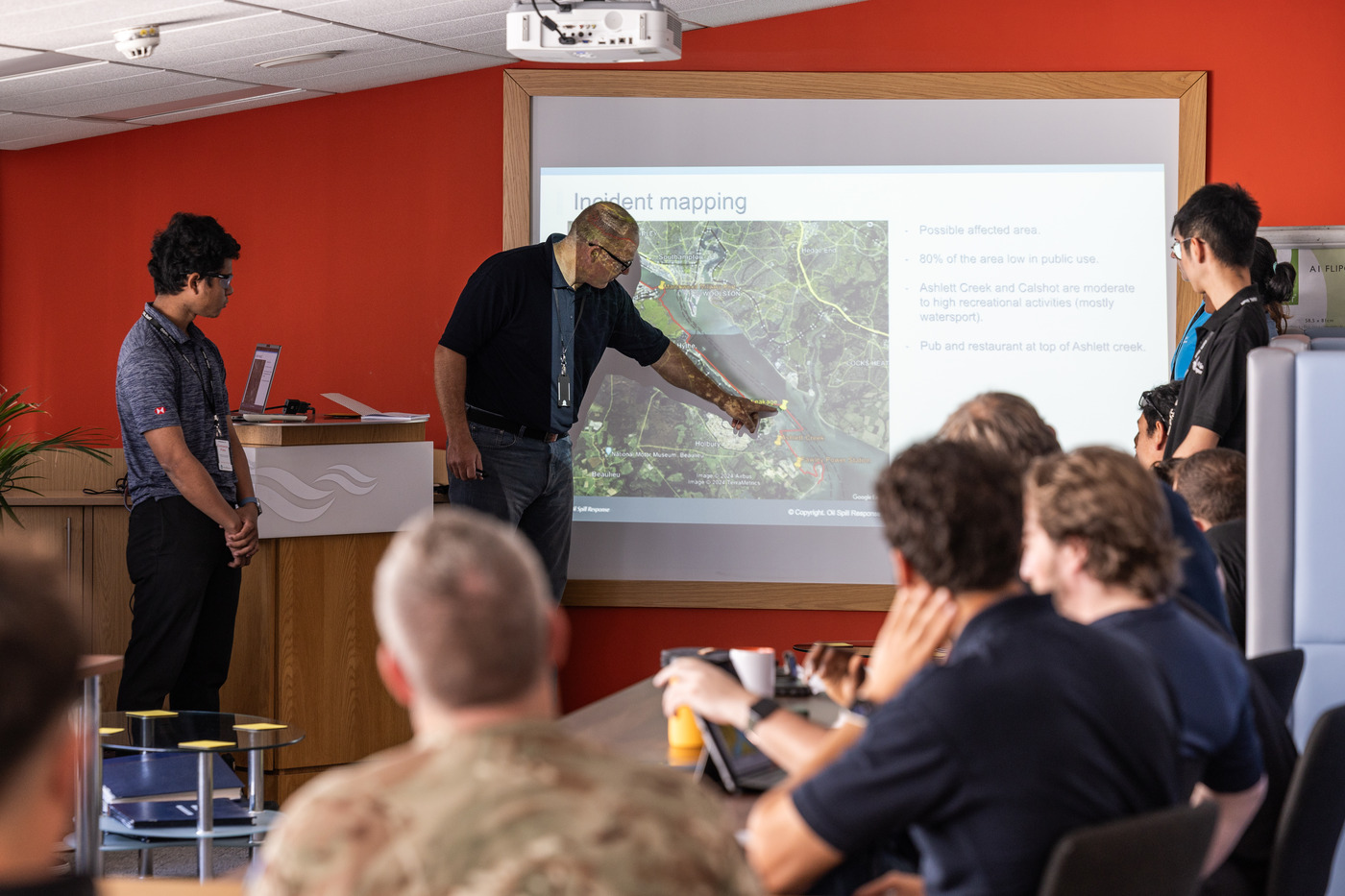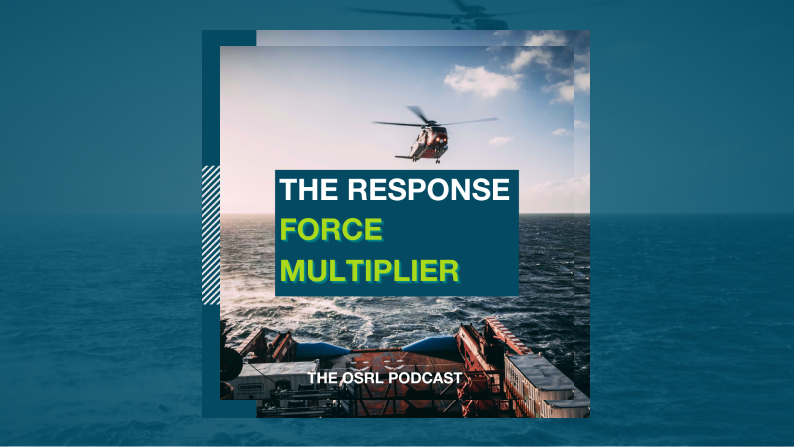Are crisis planners confident that they're equipped for the next significant challenge?
2020 was undoubtedly an extraordinary year, with each of us facing new and unique challenges. As a result, adjectives like ‘unprecedented’ and ‘unforeseeable’ have become buzzwords for describing the catastrophic events of the COVID-19 pandemic. Leaders have used them liberally to defend their response when, in truth, many of the risks that governments and commercial organisations faced were arguably not without precedent or were predictable to some degree.
There were well-documented failings in the global response at both an organisational and national level and leaders must, therefore, ask whether their worst-case scenario (WCS) planning and preparedness were adequate for this crisis or would be for the next. As the lessons learned from COVID-19 are collated and refined, it will be important to question if crisis planners are confident that they’re equipped for the next significant challenge, or that they even know how the next crisis may present itself?
Balancing the forces of incidence and consequence
Human nature assumes the future will be like the past. We learn through experience. This shared expectation has taught us to recognise common risks, like those associated with natural disasters such as earthquakes, tsunamis, hurricanes or flooding. Dealing with their devastating impact has taught us the importance of being prepared and the value of planning to help mitigate the collective costs. The repetitive cycle of events and a drive for continual improvement have massively raised oil spill preparedness levels. This evolution has led to the use of technology and innovative solutions to ensure that these risks can be mitigated, and processes developed to manage their consequences.
Industrial and human-made disasters have proven to be a different – arguably greater – challenge for crisis planners to predict. The Bhopal gas tragedy, the Chernobyl nuclear reactor explosion and 9/11 terrorist attacks stand as a testament to this fact. All were unique events at the time of their happening, resulting in an unimagined threat to life and untold destruction, with seemingly no effective emergency response and crisis management plan in place. The painful lessons learned have helped significantly improve planning processes, and levels of prevention and preparedness – whilst also serving to remind us of the dangers of ignoring events previously considered impossible.
Likewise, the Deepwater Horizon (DWH) oil spill revolutionised preparedness practices in the oil industry. Expert opinion had previously considered planning scenarios on the scale of DWH (an uncontrolled, full bore release for 87 days) as implausible. However, there was, perhaps surprisingly, an existing precedent. In 1979, the Ixtoc I well blowout released three million barrels of oil into the Gulf of Mexico, so questions must be asked about whether rarity governed why this type of scenario was not a fundamental planning requirement?
Worst-case scenario vs worst-credible-case scenario: nuance or planning fundamental?
Part of the challenge faced by crisis planners is balancing the cost of preparing for the unknown. To quote Karl Schroeder, “foresight is not about predicting the future, it’s about minimising surprises” and having systems and process in place to respond if they do occur. Identifying these approaches costs money, as does their ongoing development and the requisite personnel training, so there is naturally a balance to be found based on your appetite towards risk and an understanding of specific events’ potential implications.
Immunologists have long raised the risk of an airborne virus precisely of COVID-19’s nature spreading across the globe. Equally, the Spanish Flu pandemic of 1918 is a relevant case study, highlighting the consequences of such an episode. Clearly, COVID-19, although highly unlikely, was not unforeseeable.
The concepts of ‘black swans’ and ‘grey rhinos’ describe these types of events; those that are either genuinely unforeseeable or those that represent something you actually can see coming, if you are prepared to look. COVID-19 was, in this context, a grey rhino and not a black swan, so arguably shortcomings in our collective responses need to be addressed with a critical eye and an admission that we could have done better in certain areas.
However, if we apply the same logic, there are other events that are even less likely but potentially more catastrophic. A solar flare or geomagnetic storm, an asteroid strike, or a super-volcanic eruption are all plausible. But, do we need to plan for these? In an ideal world, we would have some level of planning and preparedness for even these types of events - developed under the premise of comprehensive WCS planning. In reality, the likelihood of these events occurring means even the largest governments are unlikely to have fully considered their intended response or even the possible consequences.
Planners need to expect the unexpected and put all options on the planning table. Nothing should be considered too unlikely to be discussed, especially if a severe outcome can reasonably be projected. What flexes is the level of investment that an organisation or government is prepared to assign to exploring the potential risks and the level of detail applied to the subsequent planning.
Foresight is not about predicting the future, it’s about minimising surprises
Does process help or hinder?
Crisis-planning mechanisms and the processes established for localised and catastrophic events alike have evolved through experience, revealing the required response’s true complexities.
Using WCS methodologies, combined with the PEAR (People, Environment, Assets and Reputation), planners can analyse a crisis to determine all the potential effects. For a pandemic, the worst-case scenario doesn’t get much worse than a global coronavirus with human-to-human transmission – a non-discriminatory virus where planners also need to balance their response with economics, potential civil unrest and, in some areas, even politics.
An essential part of WCS planning is identifying other related crises and applying their learnings quickly. The Spanish flu second wave was more destructive than the first. That pandemic lasted for two years, and the mutated virus spread via wartime troop movements. Over 100 years on, and with significantly more global movement, the worst case for coronavirus would suggest it is going to be around for a long time to come, with ruinous subsequent waves. Has that been considered as part of your organisation’s planning?
Playing catch up in a crisis
The difference between planning for the worst-case scenario and reacting to it is that the luxury of time has gone. The shift from proactive to reactive puts you on the back foot, exposed, errors can be compounded, and specific issues can continue to escalate.
In the early days of the pandemic, national-level conversations on response had competing objectives. On the one hand, you had virologists and immunologists championing lockdowns, isolation and social distancing. On the other side, you had business leaders and economists pushing to limit restrictions for fear of a recession crippling the economy. Governments mostly decided to walk a tightrope between the two conflicting forces, initially looking optimistically at their predictions and the impact of their actions. However, this approach quickly began to develop cracks. For example, in early April, the UK saw 3,728 more fatalities across seven days than its Scientific Advisory Group for Emergencies (SAGE) had estimated [1]. This revelation drove rapid and reactive changes to the policy for care home residents. Still, one could easily argue that this could have been avoided had the worst-case scenario planning been more realistic and less optimistic.
Whilst the worst-case scenario may not happen every time, a possible event on the spectrum might, therefore, time spent discussing and analysing a specific crisis in those early days, or from rising-tide triggers, could save time, money and lives in the longer term.
It depends on the crisis
The term ‘crisis’ is often used interchangeably with ‘incident’, or even ‘event’, but there are fundamental differences. At OSRL, we define a crisis as “a negative event that will stop business as usual to some extent and will require immediate and potentially longer-term attention and guidance from leadership.” By comparison, an incident is defined as “an event with a negative outcome that has occurred, or is occurring, and requires immediate response to stop the event or curtail the resultant implications. It has the potential for prolonged disruption or could lead to disruption, loss, emergency or crisis.”
When it comes to WCS planning, and its application to navigating through a crisis, the duration of the crisis is what’s most likely to drive the requirement for a continual or periodic review of the WCS. Is it possible for planners to completely define the WCS before the crisis has happened? Did anyone correctly predict how long COVID-19 would persist in their own pandemic planning? Short-lived crises are more likely to resemble a common scenario within the WCS planning spectrum, so additional thought needs to be applied to the potential WCS regarding longevity and ongoing escalation.
In conclusion
Worst-case-scenario planning, review and reflection is essential in any planning process. It should be completed in the preparedness stage, reviewed in the early stages of an incident, especially if there is the potential for it to develop into a crisis, and at other pertinent points in a crisis. Following a crisis, time to reflect on how the WCS may change in the future should also be incorporated. By going through the WCS process, you will have considered every possible scenario and those that don’t qualify as ‘worst case’ are also recognised and recorded. As the cadence of a crisis reduces, and things start to return to business as usual, the worst-case-scenario documentation can remain in place and simply be reviewed at longer intervals.
In terms of the WCS being used to navigate a crisis, that depends on the crisis itself and how well the WCS was defined and planned for in the first place – further highlighting the need to plan for the best and prepare for the worst – no matter how unlikely.
References:
No organisation is immune to a crisis - are you ready?
Ensure you have an effective Crisis Management Team and functional crisis preparedness system in place with our Crisis Preparedness Services.






